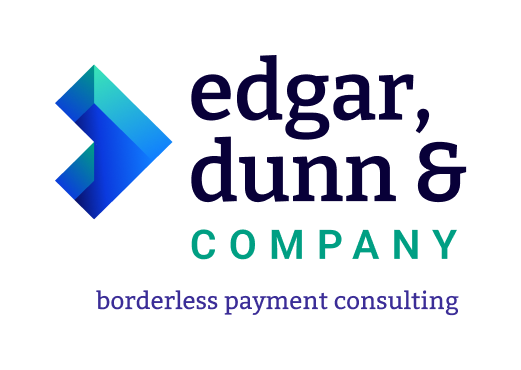The rise of cryptocurrency in global ecommerce - ThePaypers
Tue To, Head of Advanced Payments and Fintech for North America at Edgar, Dunn & Company, elaborates on the evolution of cryptocurrency from a niche experiment to a payment method used for global ecommerce.
Global ecommerce continues its upward trajectory despite substantial headwinds such as economic uncertainty, tariff barriers, and geopolitical tensions. According to Global Data, it is projected to expand from USD 7.7 trillion in 2025 to USD 11.7 trillion by 2030, reflecting a strong 8.5% CAGR. This growth is driving demand for payment solutions that improve efficiency, reduce costs, and offer greater flexibility.
Among emerging alternative payment methods (APMs), cryptocurrency has evolved from a niche experiment to a strategic consideration for forward-thinking merchants. While its adoption is still in the early stages – accounting for less than 1% of global ecommerce transactions in 2024 – shifting consumer sentiment suggests a transformation on the horizon. A global survey conducted by Arlington Research and Kaspersky reveals that 44% of consumers expect cryptocurrency to become a mainstream payment option for online shopping in the coming years.
Cryptocurrency's entry into the ecommerce world dates back to the now-legendary 2010 purchase of two pizzas for 10,000 Bitcoin – an amount that would be worth more than a billion dollars today. What was initially perceived as little more than a technological novelty has gradually gained legitimacy as a viable payment method, propelled by growing institutional support and the emergence of digitally native consumers.
By 2025, this evolution has translated into tangible market presence, with around 15,174 businesses globally and about 2,300 retailers in the US alone. This uptick has been catalysed by major payment processors like PayPal, Stripe, and Square, which have integrated crypto payment options into their platforms. This integration enables merchants to accept digital assets without managing wallets or dealing with volatility risks.
While technological advances have made cryptocurrency more accessible to businesses of all sizes, adoption has been more prevalent among larger retailers that have the resources and technical capabilities to support new payment technologies.
Cryptocurrency adoption within ecommerce can be categorised into four approaches:
While Bitcoin remains the leading cryptocurrency, the ecommerce ecosystem has diversified to include several other digital currencies, each offering unique advantages. Among the most widely accepted are Bitcoin, Ethereum, Dogecoin, Litecoin, and stablecoins like USDT and USDC. While the former are often valued for their brand recognition and user adoption, it is the stablecoins that are gaining popularity in ecommerce due to their price stability. Across the board, these digital currencies are also appreciated for their transaction efficiency – including faster settlement times, lower processing fees in some cases, and the ability to operate without traditional intermediaries.
The table below is a high-level comparison of these cryptocurrencies that ecommerce brands are accepting as payment:
| Cryptocurrency | Use cases | Strengths | Limitations |
| Bitcoin (BTC) | High-value transactions | Most recognised, secure, decentralised, store of value | Slower transactions and higher fees compared to other cryptocurrencies |
| Ethereum (ETH) | Smart contracts, decentralised applications | Programmable transactions, blockchain flexibility | High fees, scalability issues |
| Litecoin (LTC) | General purchases | Faster and cheaper compared to BTC and ETH | Less widespread adoption and investment appeal compared to BTC |
| Dogecoin (DOGE) | Microtransactions, tipping, payments in niche communities | Fast, low-cost transactions, community-driven | High volatility, limited long-term stability |
| Stablecoins (USDT, USDC) | Routine payments, low volatility risk, cross-border transactions | Price stability, pegged to a fiat currency | Dependency on reserves, regulatory scrutiny |
Cryptocurrency adoption in ecommerce varies significantly across regions, driven by factors such as regulatory clarity, economic conditions, and cultural attitudes toward digital innovation.
The table below provides a list of companies (across different regions) that currently accept cryptocurrencies as payments, either directly or through partnerships. It includes the accepted cryptocurrencies, partnership details, and the method of acceptance. Please note that this list is for illustrative purposes only and is not exhaustive.
| Region | Company: cryptocurrencies accepted | Partnership/integration | Method of acceptance |
| North America | Overstock: BTC, ETH, XMR, LTC, XRP, DASH, BCH | ShapeShift | 50% turned into fiat, 50% held as cryptocurrency |
| Starbucks: BTC, ETH, LTC | Bakkt | Converted into fiat | |
| NewEgg: BTC, BCH, ETH, LTC, DOGE, EBTC, Dai, USDC, GUSD, XRT, USDT, GUSD | BitPay | Converted into fiat | |
| Shopify: BTC, ETH | Multiple integrations | Dependent on specific retailers | |
| Menufy: 13, including BTC, DOGE, XRP, LTC, USDC, Gemini Dollar | BitPay | N/A | |
| Europe | Printemps: BTC, ETH | Binance | N/A |
| Alza: BTC | Bitcoinpay | Returns facilitated in fiat | |
| Just Eat: BTC | BitPay | Converted into fiat | |
| Travala: over 100, including BTC, AVA, ETH, XRP, BCH | Binance | Holds BTC and AVA in treasury | |
| airBaltic: BTC, ETH, BCH, DOGE, GUSD, USDC, USDP, BUSD | BitPay | Converted into fiat | |
| Asia-Pacific | Rakuten: BTC, ETH, BCH | Rakuten Wallet | Accepts directly or converts to fiat |
| Wafuu: 16, including BTC, USDT, ETH, TON, SOL | N/A | N/A | |
| Charles & Keith: BTC, ETH, USDT | TripleA | Converted into fiat | |
| Kibbles: ETH, BTC, DOGE, USDC, etc. | N/A | N/A | |
| Mercari: BTC | Mercoin (subsidiary) | Converted into fiat | |
| Latin America | Grupo Elektra: BTC | BitPay | Converted into fiat |
| Distribuidora Morazan: BTC | Blink | Accepts directly or converts to fiat | |
| McDonalds: BTC | N/A | N/A | |
| Salvadorean Tours: BTC | N/A | N/A | |
| Middle East and Africa | The List: BTC | BitPay | N/A |
| Plazzo Versace Dubai: BTC, BNB, ETH | Binance | N/A | |
| South African Travel Desk: multiple (not specified) | Coinpay | N/A | |
| eGifts24: BTC, ETH, XRP, USDC, BUSD, USDT | N/A | N/A | |
| Takealot.com: BTC | BITX, PayFast | N/A | |
| Fuge: BTC, among others (not specified) | Coinazer | N/A |
Sources: company websites
Accepting cryptocurrencies in ecommerce offers several advantages, including lower processing fees (typically under 1% compared to credit cards' 2-5%), faster payment settlement (minutes instead of days), and enhanced security through blockchain technology. Crypto payments are also irreversible, eliminating chargeback risks. A key benefit is their cross-border capability, allowing direct transactions between buyers and sellers without complex banking processes, intermediaries, or high currency conversion fees – making global sales simpler and more cost-effective. Additionally, merchants can position their brands as innovative, attract tech-savvy consumers, and diversify payment methods.
However, several barriers have limited cryptocurrency adoption in the ecommerce ecosystem:
The adoption of cryptocurrencies in ecommerce is still in its early stages but is steadily gaining momentum, driven by merchant integration, growing consumer interest, and institutional support. As major payment networks like Visa and Mastercard integrate stablecoin solutions and different regions across the globe show strong adoption trends, the role of cryptocurrency in ecommerce is expected to expand significantly.
Looking ahead, stablecoins are set to enhance the viability of crypto payments by mitigating price volatility and bridging digital and traditional currencies. In the near term, adoption will likely continue to be indirect, facilitated by payment processors that convert crypto to fiat, shielding businesses from volatility risks. However, as blockchain infrastructure and regulatory clarity evolve, direct acceptance could become more feasible.
Stablecoins are also emerging as strong candidates for agentic payments, where AI agents autonomously initiate and complete transactions. Their programmability, 24/7 infrastructure, and ability to operate without intermediaries make them particularly well-suited for this next wave of digital commerce. As agentic payments become more prevalent in the coming years, crypto adoption could accelerate significantly.
For innovative ecommerce merchants, the question is no longer whether to adopt cryptocurrency but how to strategically incorporate it into their payment systems. In doing so, the key is not to rush into adopting every available cryptocurrency, but to take a measured approach that aligns with business objectives, customer needs, and risk tolerance.
 Tue To, based in San Francisco, is the Head of Advanced Payments and Fintech for North America at Edgar, Dunn & Company. She has over 15 years of experience in economic and strategy consulting, assisting clients worldwide in optimising their payment operations, identifying new business opportunities, and implementing innovation solutions to drive growth and profitability through a combination of strategic thinking and practical insights. Tue’s expertise spans various areas, including payment processing, card networks, mobile payments, international remittances, and emerging technologies.
Tue To, based in San Francisco, is the Head of Advanced Payments and Fintech for North America at Edgar, Dunn & Company. She has over 15 years of experience in economic and strategy consulting, assisting clients worldwide in optimising their payment operations, identifying new business opportunities, and implementing innovation solutions to drive growth and profitability through a combination of strategic thinking and practical insights. Tue’s expertise spans various areas, including payment processing, card networks, mobile payments, international remittances, and emerging technologies.
 Edgar, Dunn & Company (EDC) is an independent global payments consultancy. The company is widely regarded as a trusted adviser, providing a full range of strategy consulting services, expertise, and market insights. EDC expertise includes M&A due diligence, legal and regulatory support across the payment ecosystem, fintech, mobile payments, digitalisation of retail and corporate payments, and financial services.
Edgar, Dunn & Company (EDC) is an independent global payments consultancy. The company is widely regarded as a trusted adviser, providing a full range of strategy consulting services, expertise, and market insights. EDC expertise includes M&A due diligence, legal and regulatory support across the payment ecosystem, fintech, mobile payments, digitalisation of retail and corporate payments, and financial services.







